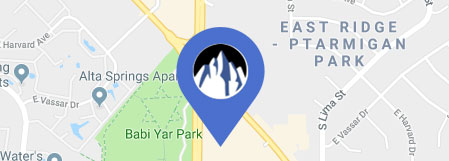In the dynamic world of kickboxing, mastery of technique and precision is crucial for success. This is a core skill that we focus on in Intermediate and Advanced Striking classes at High Altitude Martial Arts. Reactive pad work, an essential component of training, enhances fighters’ speed, timing, and overall skill set. This blog explores the significance of reactive pad work in kickboxing and how it contributes to elevating one’s performance in the ring.
Understanding Reactive Pad Work:
Reactive pad work involves a dynamic interaction between the fighter and the coach, who holds pads that the fighter strikes in response to specific cues. Unlike traditional pad work, which follows predetermined combinations, reactive pad work challenges fighters to adapt quickly to unpredictable situations, simulating the chaotic nature of real fights.
Benefits of Reactive Pad Work:
- Improved Reaction Time: By training with unpredictable combinations and scenarios, fighters sharpen their reflexes and learn to respond rapidly to changing situations, a crucial skill in the fast-paced environment of kickboxing.
- Enhanced Accuracy: Reactive pad work emphasizes precision in strikes. Fighters must hit the pads with accuracy, targeting specific areas, mirroring the precision needed during actual fights.
- Dynamic Footwork: The unpredictable nature of reactive pad work encourages fighters to move dynamically, working on footwork and positioning. This helps in creating angles for effective strikes and defensive maneuvers.
- Conditioning and Cardiovascular Fitness: The intensity of reactive pad work sessions contributes to improved cardiovascular endurance and overall conditioning, ensuring fighters are prepared for the demands of a full-length bout.
- Mental Agility: Reactive pad work challenges fighters mentally, requiring them to stay focused and make split-second decisions. This aspect of training enhances mental agility and the ability to strategize during a fight.
Tips for Effective Reactive Pad Work:
- Communication: Open communication between the coach and the fighter is key. Clear cues and signals ensure that the fighter understands the objectives of each drill, fostering a more productive training session.
- Variety in Combinations: Introduce a variety of combinations, including punches, kicks, and defensive maneuvers. This diversity prepares fighters for the unpredictability they may face in an actual fight.
- Simulate Real Fight Scenarios: Incorporate drills that simulate real fight scenarios, such as countering an opponent’s strikes or initiating attacks from different angles. This helps fighters develop a well-rounded skill set.
Reactive pad work is a cornerstone of effective kickboxing training, offering numerous benefits that translate into improved performance in the ring. By incorporating this dynamic and unpredictable training method, fighters can elevate their skills, enhance their physical conditioning, and sharpen their mental acuity, ultimately giving them a competitive edge when they step into the kickboxing ring and MMA cage.





